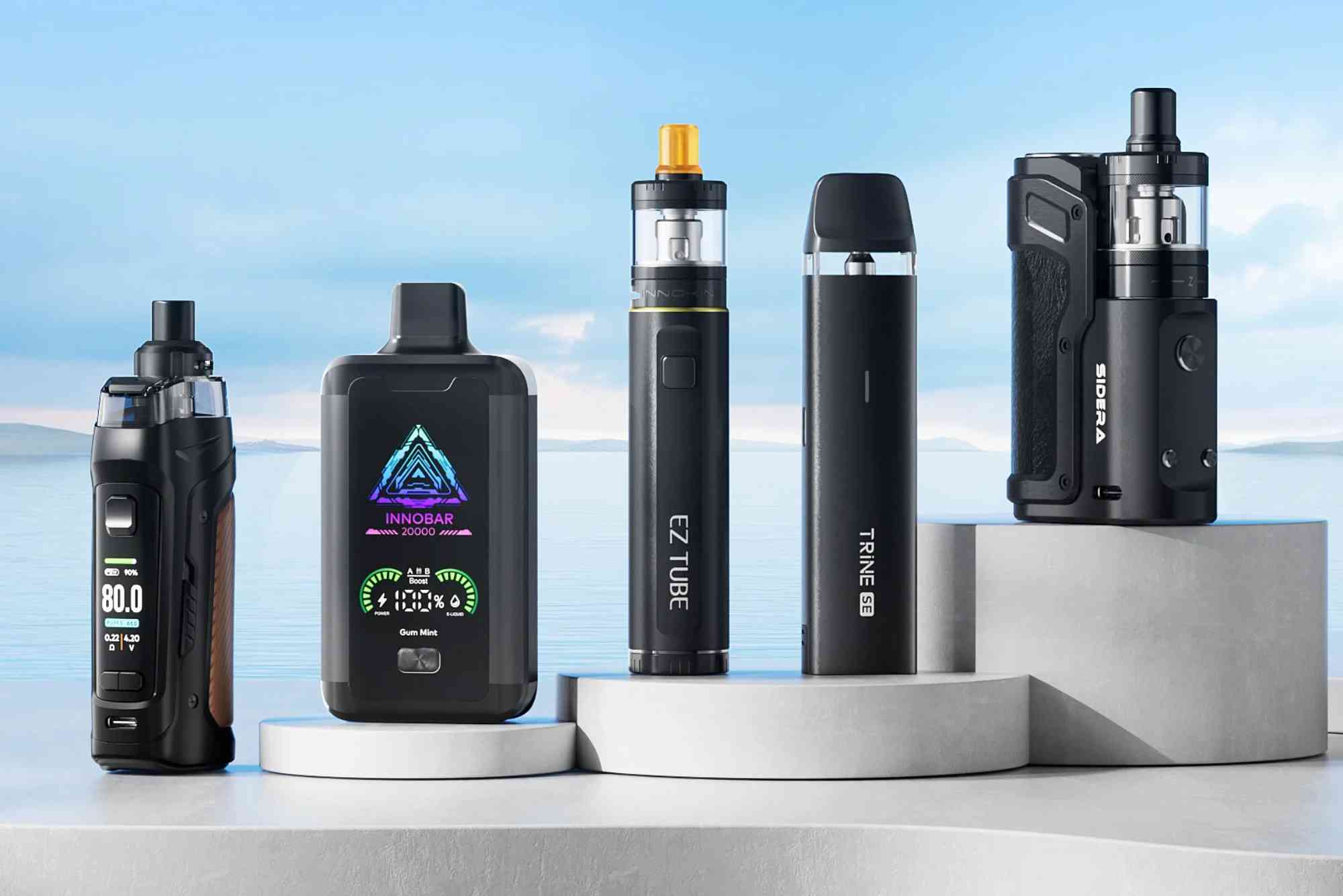Introduction
Vaping has become one of the most discussed topics in recent years, especially when it comes to age restrictions and tobacco harm reduction. Many people ask, “Can you buy vapes at 18?” The answer depends on where you live, as laws differ across countries. In the UK, for instance, the legal age to purchase vapes and e-cigarettes is 18, as stated on GOV.UK — age of sale: nicotine inhaling products (18+). However, in the United States, the federal minimum age is now 21. These differences often cause confusion for both young adults and retailers.
Vaping is frequently seen as a tool for tobacco harm reduction. Traditional cigarettes are known to contain thousands of toxic chemicals, while vaping offers a potentially safer alternative by delivering nicotine without combustion. But the question remains — can young adults at 18 make an informed decision to use vaping responsibly, and can vaping truly lead the way in reducing tobacco-related harm?
Understanding the Legal Age for Buying Vapes
Different nations have different laws regarding the sale and purchase of vaping products. The core goal of these laws is to prevent underage access while allowing adults to make their own choices.
The Legal Age in the UK
In the United Kingdom, you must be at least 18 years old to buy e-cigarettes, e-liquids, or any nicotine-containing products. This law is designed to protect minors from nicotine addiction and exposure to harmful substances. Retailers face strict penalties if they sell vaping products to anyone under 18. The UK’s stance has been clear: vaping can serve as a less harmful alternative to smoking, but it should remain restricted to adults who understand the risks and benefits.
The Legal Age in the United States
In the United States, the minimum age for purchasing any tobacco or vaping product is 21. This law, known as “Tobacco 21,” was enacted in 2019 to reduce nicotine addiction among teenagers. While some young adults feel this law limits their freedom, health authorities argue that the brain continues developing until the mid-20s, making early nicotine exposure particularly harmful.
Global Variations in Vape Age Laws
Globally, countries take varied approaches. Some nations ban vaping entirely, while others encourage it as a harm-reduction strategy. In countries like New Zealand and Canada, vaping is promoted for adult smokers looking to quit cigarettes. These governments see vaping as a tool to achieve smoke-free goals rather than a gateway for youth nicotine use.
Why the Age Limit Matters
Setting a legal age of 18 or higher is not just about controlling nicotine sales. It’s about balancing freedom of choice with public health protection. At 18, individuals are generally considered mature enough to make decisions regarding their lifestyle. Still, regulations ensure that only informed adults access nicotine-based products.
By keeping vapes out of the hands of minors, governments hope to prevent early addiction. Studies have shown that teenagers who start vaping before 18 are more likely to transition to smoking traditional cigarettes later. Therefore, enforcing age limits is essential to maintain vaping as a harm-reduction tool rather than a youth trend.
Vaping as a Tobacco Harm Reduction Strategy
Vaping has gained recognition as a significant innovation in tobacco harm reduction. Traditional smoking involves burning tobacco, which produces tar, carbon monoxide, and thousands of harmful chemicals. In contrast, vaping heats a liquid (often containing nicotine) without combustion, greatly reducing exposure to toxic substances.
Evidence Supporting Harm Reduction
Public Health England has stated that vaping is around 95% less harmful than smoking. Although not entirely risk-free, vaping eliminates most of the deadly toxins found in cigarette smoke. Many smokers who switch to vaping experience better lung health, improved stamina, and reduced coughing. This makes vaping a powerful tool for harm reduction among adults who would otherwise continue smoking.
Helping Smokers Quit
Vaping is not marketed as a medical quit aid, but many ex-smokers have used it successfully to stop smoking. E-liquids come in different nicotine strengths, allowing users to gradually reduce their nicotine intake. This flexibility makes it easier for people to transition away from tobacco without suffering from severe withdrawal symptoms.
The Role of Regulation in Safer Vaping
Strict product regulation is crucial to ensuring vaping remains a harm-reduction method. The UK, for example, regulates nicotine content, packaging, and product labeling to maintain safety. The GOV.UK — age of sale: nicotine inhaling products (18+) guidance ensures that only adults can legally access these products. Proper oversight helps prevent unsafe products and discourages underage use.
The Debate Around Allowing 18-Year-Olds to Buy Vapes
The question “Can you buy vapes at 18?” often leads to debates about maturity, addiction, and personal freedom. Some experts argue that since 18-year-olds can vote, work full-time, and serve in the military, they should have the right to make choices about vaping. Others believe that nicotine addiction poses enough risk to justify raising the age to 21, as done in the U.S.
Both sides have valid points. The key issue lies in education. If young adults are well-informed about nicotine, addiction, and harm reduction, they can make responsible decisions. Banning access entirely may drive them toward illegal or unregulated products, which can be far more dangerous.
Public Perception and Misconceptions
Despite growing scientific evidence, vaping still faces negative public perception. Many people mistakenly believe vaping is as harmful as smoking. This misconception often stems from media reports highlighting isolated incidents of unregulated or counterfeit products causing harm.
However, reputable vaping devices and e-liquids, when purchased legally, are subject to strict safety standards. Governments like the UK’s continue to promote accurate information to ensure that smokers understand vaping as a safer alternative, not a new risk.
Vaping and Youth Protection
While vaping can help adult smokers quit, protecting youth remains a top priority. Preventing teens from accessing vapes is critical to maintaining credibility in harm reduction policies. Advertising restrictions, ID verification, and penalties for retailers selling to minors are important enforcement tools.
Parents, educators, and health professionals also play a role. Awareness campaigns can help young people understand the difference between vaping as a quitting aid for smokers and recreational use that can lead to addiction.
Can Vaping Lead the Way in Reducing Tobacco Harm?
If regulated responsibly, vaping can indeed lead the way in reducing tobacco-related diseases. By offering an alternative to smoking, vaping can help millions of people reduce their exposure to harmful chemicals. Countries that have embraced vaping as a public health tool, such as the UK and New Zealand, have already reported declining smoking rates.
For vaping to lead the way, governments must maintain a careful balance between accessibility for adults and protection for minors. Ongoing research, public education, and product regulation will be key to ensuring vaping continues to serve its intended purpose — harm reduction, not addiction.
The Future of Vaping and Tobacco Control
Looking ahead, vaping will likely remain central to global tobacco control efforts. As more evidence supports its benefits over smoking, public health organizations are expected to refine their approaches. The next step involves more robust data collection and long-term studies to better understand the health impacts of long-term vaping compared to smoking.
Meanwhile, manufacturers must continue improving device safety, flavor quality, and labeling transparency. With innovation and regulation working together, vaping could help societies transition to a smoke-free future.
So, can you buy vapes at 18? In many countries like the UK, yes — but always within regulated boundaries. Vaping holds great promise as a tobacco harm reduction tool when used responsibly by adults. It offers smokers a safer way to satisfy nicotine cravings while avoiding many of the deadly toxins found in cigarettes.
The challenge is maintaining strict regulation to prevent youth access while supporting adult smokers who want to quit. Education, awareness, and responsible use will determine whether vaping truly leads the way in global tobacco harm reduction.If you’re considering switching from smoking to vaping, make sure to purchase your products responsibly and from licensed vendors. Stay informed, stay safe, and explore government resources like GOV.UK — age of sale: nicotine inhaling products (18+) for the latest legal guidelines.
FAQs
Can you legally buy vapes at 18 in the UK?
Yes, you can legally buy vapes at 18 in the UK. The government enforces strict rules to prevent underage sales, ensuring only adults purchase nicotine products.
Why is the vaping age limit different in the US and UK?
The UK allows vape sales at 18, while the US set the limit at 21 under “Tobacco 21.” The difference is due to varying public health policies and approaches to youth protection.
Is vaping safer than smoking?
Yes, according to Public Health England, vaping is significantly less harmful than smoking because it doesn’t involve tobacco combustion or tar.
Can vaping help you quit smoking?
Many people use vaping to quit smoking by gradually reducing nicotine intake. While it’s not an official medical treatment, it’s often more effective than patches or gum for some users.
Do vapes contain tobacco?
No, e-liquids used in vapes do not contain tobacco. They may contain nicotine derived from tobacco, but the harmful effects of combustion are eliminated.
What happens if someone under 18 buys a vape?
Retailers face penalties for selling vapes to minors. In some cases, both the buyer and seller may face fines or legal action depending on local laws.




